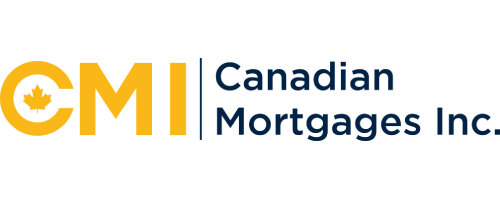Mortgage Suitability: Enhancing Trust and Transparency in Canada’s Lending Landscape
Navigating the Canadian mortgage market, with its diverse range of options and complex regulatory landscape, can be a daunting task for borrowers and brokers alike. As the Canadian housing market continues to evolve and the industry grapples with the challenges of the current economic climate, the spotlight has turned to the critical issue of mortgage suitability.
What is Mortgage Suitability?
Mortgage suitability hinges on three vital pillars: appropriateness of the solution based on the borrower’s needs and circumstances; affordability/ability to repay; and appropriateness of option(s) based on the products and lenders available to the mortgage broker. These bedrock principles are designed to ensure that when recommending a mortgage product, brokers match solutions with the unique needs and circumstances of their clients. This not only protects consumers but also upholds the integrity of the industry.
In practice, however, application of suitability principles has been inconsistent, particularly in the private space. In fact, some of the most common consumer complaints the Financial Services Regulatory Authority of Ontario (FSRA) receives involve a failure to adhere to suitability principles in the national Code of Conduct for the mortgage brokering sector. This has captured the attention of regulators and led to a series of industry initiatives to elevate broker education and enhance consumer protection.
Industry Developments to Safeguard Borrowers
The Mortgage Broker Regulators’ Council of Canada (MBRCC), a collaborative forum for Canada’s mortgage broker regulators to address regulatory trends and issues, has underscored the significance of mortgage suitability.
On June 21, in a bid to fortify industry standards, the MBRCC issued a set of proposed principles for conducting mortgage suitability assessments, with a plan to finalize them by the end of this year. These include understanding clients’ unique needs, understanding available mortgage products, and ensuring clear communication and documentation of recommended options. These will serve as best practice principles to support mortgage brokers in recommending suitable mortgages to their clients and to further consumer protection.
Another key aspect of the regulatory drive to address mortgage suitability and consumer protection involves enhancing broker education, particularly in the realm of private lending. Regulatory bodies like the Financial Services Regulatory Authority of Ontario (FSRA) and the province of British Columbia have instituted new educational requirements, aimed at equipping brokers with the necessary knowledge and expertise to help borrowers navigate the private lending space.
Overall, the focus on suitability, accountability, and competence further reinforces the industry’s commitment to elevating professional standards and fostering transparent and ethical practices within the sector.
Private Lending and The Suitability Paradox
Growth in private lending has raised heightened concerns about mortgage suitability, particularly since these lenders tend to serve more financially vulnerable borrowers. As an increasing number of borrowers struggle to qualify with traditional lenders, it is imperative for brokers to possess an understanding of the full range of mortgage financing options available in the market. Proficiency across the mortgage spectrum not only ensures brokers match their borrower clients with the most suitable solution for their unique needs and circumstances, but also equips them to serve a more diverse range of borrowers. As each option comes with its own set of product features, regulations, risks, and fees, brokers must be able to understand and clearly explain the nuances of each option to their borrower clients.
While the growth of private lending has raised concerns from various corners about oversight and consumer protection, many remain unaware of how suitability principles are intrinsic in the industry’s underwriting model. The collaborative approach employed in private lending facilitates a comprehensive understanding of clients’ specific needs, allowing brokers and underwriters to work together to tailor optimal solutions for borrowers. Further, an exit strategy – unique to private mortgage underwriting – is a built-in safeguard to ensure the solution is short-term and includes a viable plan to move to a traditional lender at maturity.
The sector’s collaborative model underscores the importance of building partnerships with trusted private lenders. This not only safeguards consumers’ financial interests but also ensures industry integrity by flowing transactions away from unscrupulous lenders. The emphasis on partnering with reputable private lenders serves as a cornerstone for enhancing the industry’s credibility by fostering transparency and ethical lending practices.
The Path Forward
The value of a broker – particularly in an uncertain market – is the expertise, guidance and advice they provide to borrowers. By encouraging a comprehensive understanding of the complete lending landscape – including the private lending space – and upholding the principles of suitability and client-centricity, the mortgage brokering community can fortify its role as a trusted facilitator of financial security and prosperity for Canadian borrowers.
To accomplish this, the onus falls on both regulators and industry stakeholders to prioritize consumer interests, fortify industry standards and oversight, and nurture a culture of continuous learning. Together, by promoting industry excellence, we can forge a stronger, more transparent mortgage landscape for all.
About the Author
Elizabeth Wood is an award-winning financial executive with expertise in organizational design, change management, policy development and implementation, and regulatory oversight and governance. As EVP and Chief Compliance Officer of CMI Financial Group, she has been instrumental in driving innovation and operational excellence that have grown the company to become one of Canada’s largest private mortgage lenders with more than $2 billion in lifetime fundings.
Join the conversation in-person and be apart of the innovation occurring in lending:
On May 15th, 2024, discover how next-gen FIs are partnering with fintech to accelerate innovation. Join over 500 banks, credit unions and fintechs in our networking hall building partnerships. The expert panels will take a deep dive into Core Modernization, BaaS, Embedded, Sustainable Finance and much more.



